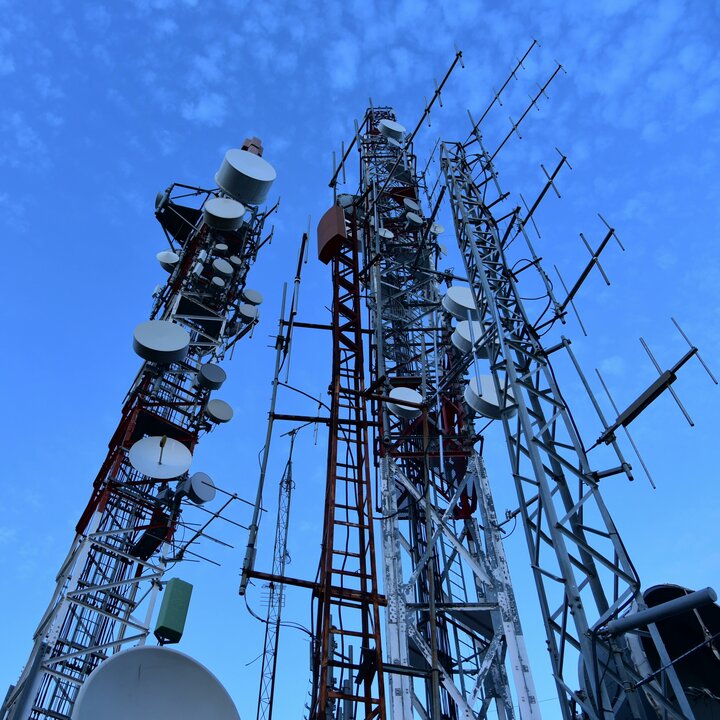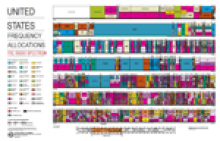
Telecommunications: 'Need for Dynamic Spectrum and How to Satisfy It.'
 'Need for Dynamic Spectrum and How to Satisfy It'
'Need for Dynamic Spectrum and How to Satisfy It'
Rewatch
- the 'Need for Dynamic Spectrum and How to Satisfy It.'
- the mp4 Radar Incumbent
- the mp4 Dynamic Spectrum slot allocation
Spectrum matters because communications matters, and wireless and mobile communications now dominate all communications globally.
Spectrum sharing matters because communications spectrum is a scarce asset, and demand is growing very fast, both because billions of new Internet access users will come online, and because new Internet apps and devices consume vastly more bandwidth
Spectrum sharing is necessary because growing demand is crowding the airwaves. Smartphones, the Internet of Things, military and public safety radios, wearable devices, smart vehicles and countless other devices all depend on the same wireless bands of the electromagnetic spectrum to share data, voice and images.
Dynamic Spectrum sharing is a way to optimize the use of the airwaves, or wireless communications channels, by enabling multiple categories of users to safely share the same frequency bands.
The department KIVI-Telecommmunications invited you for the following seminar with the theme: “Need for Dynamic Spectrum and How to Satisfy It” is the subject for explaining more about Spectrum Sharing. This interesting seminar will give the concepts to be ready for the future frequency spectrum.
The following speakers will give their opinion about the developments and possible solutions for Spectrum Sharing:
Speaker 1:
Frameworks and Technologies that can enable Real-time Dynamic Spectrum Sharing”
Speaker: Spilios Giannoulis, Universiteit Gent and IMEC

Abstract
With the emergence of new wireless technologies and the wide adoption for a wide range of applications, larger and more dense wireless networks are deployed today worldwide. The dominant approach of spectrum usage is defined mainly through static allocation of spectrum based on targeted applications or specific technologies. We argue that this approach will soon lead to a dead-end where it will be impossible to predefine static spectrum allocations for every application and wireless technology available, as the needs for wireless communications are dramatically increasing. Therefore we need to focus on investigating on frameworks and technologies that can enable real-time dynamic spectrum sharing while adhering to specific QoS characteristics.
Speaker's Bio
Spilios Giannoulis received his Diploma in Electrical and Computer Engineering (2001) and his PhD (2010) in the area of routing for wireless mobile sensor networks. From 2001 until 2015 he has been a researcher involved in several E.U. and national R&D projects at Industrial Systems Institute (www.isi.gr) and the Applied Electronics Laboratory (APEL), University of Patras, Greece. From 2005 until 2015, he was also lecturing at the Technological Educational Institute of Patras, Greece. He is currently a senior researcher in imec, Belgium involved in several EU projects in the area of reconfigurable and adaptive wireless networks. He has served as technical leader of the H2020 project WiSHFUL, technically led the Scatter Team that took part in the DARPA Second Spectrum Collaboration Challenge, resulting in winning 1.5 million US dollars prizes in total from DARPA and also led the European Space Agency CODYSUN project.
His is a member of the IEEE and his main research interests are in the fields of wireless networks, mobile ad-hoc networks, wireless sensor networks, focusing on flexible and adaptive MAC and routing protocols, QoS provisioning, cross-layer and power aware system architecture design, spectrum resource management for public and licensed bands dynamic spectrum access, 4G and 5G networks with more than 50 relevant publications in related international conferences and journals.
Speaker 2
“Dynamic Frequency Management and Sharing (DSMS)”
Speaker: Frank Bodewes, Dutch Digital Infrastructure Authority (RDI)

Abstract
Frequency assignments have been a more or less static business for decades where radio services or coverage areas are protected against interference for a relatively high percentage of time (depending on requirements of the service). Where sources for calculation have always been statistics and (radio propagation) models, increasing knowledge, more sophisticated models and AI, more computational power and more data (e.g. height or clutter data) have become available to perform better frequency planning. However this still results in ‘unused radio spectrum’, depending on time, place and/or frequency. Research shows that the use of modern techniques and intelligence (AI) can lead to very efficient and dynamic use of radio spectrum. This is especially true in a greenfield environment, but proves more difficult in an existing environment with dense (commercial) use and services or coverage area’s with protection rights.
The DSMS project started by the Dutch Digital Infrastructure Authority (RDI) is meant to showcase the next step in frequency management and to gather experience and trust in more automated dynamic assignment of frequencies.
This presentation walks through the background of the pilot in the 3800MHz-4200MHz band and the operational and technical challenges when trying to introduce a (dynamically controlled) private 5G network while protecting the incumbent use (satellite reception). It will touch on the required simplifications made in the models and the room for refinement of the pilot.
Speaker's Bio
Frank Bodewes werkt als adviseur bij de Rijksinspectie Digitale Infrastructuur (RDI, vanaf 1 januari de nieuwe naam van Agentschap Telecom). Hij heeft 25 jaar ervaring met frequentie en telecommunicatievraagstukken. Naast het opstellen van het telecommunicatiebeleid bij een regionale netbeheerder is hij betrokken bij het opzetten van een ‘Private Virtual Network Operator’ ten behoeve van een regionale netbeheerder waardoor provider-wissel mogelijk is zonder SIM-wissel voor de diverse IoT assets. Daarnaast is hij actief in een project dat de mogelijkheden verkent van Dynamic Spectrum Management & Sharing (DSMS). Verder kijkt Frank binnen de RDI wat er nodig is om de energietransitie te faciliteren vanuit het oogpunt van de noodzakelijke digitalisering van de energievoorziening en de bijbehorende risico’s en uitdagingen die daarmee gepaard gaan.
Chairman: Ignas Niemegeers, Center for Wireless Technology, TU Eindhoven

Speaker's bio
I.G.M.M. Niemegeers got a degree in Electrical Engineering from the University of Gent, Belgium in 1970, an MSc in 1972 and a PhD degree in 1978 in Computer Engineering from Purdue University, USA. From 1978 to 1981 he was a system designer at Bell Telephone Mfg. Cy, Antwerp, Belgium. From 1981 to 2002 he was professor at the University of Twente, The Netherlands. From 1995 to 2002 he was Scientific Director of the Centre for Telematics and Information Technology (CTIT) of the University of Twente. From 2002 until 2012 he was chairman of the Telecommunications Department and professor in Wireless and Mobile Communications at Delft University of Technology.
Since August 2012 he is emeritus professor at Delft University of Technology and advisor to the Centre for Wireless Technology at Eindhoven University of Technology, The Netherlands. He was involved in many European research projects and reviewer for many projects. His present research interests are 5G, Radio-over-fiber networks, 60 GHz networking, energy aware networks, and 5G.
Links:
What is Spectrum Sharing, and Why Does it Matter? by Gary Kim, November 16, 2015
Spectrum Sharing Model Gaining Ground
Dynamic Spectrum Sharing: The Pros and Cons
United States Frequency Wall Cart 2016
Documenten
- 1.0 Introduction KIVI Seminar by Ignas Niemegeers, Center for Wireless Technology, TU/e
- 2.0 Dynamic Spectrum Sharing in EU by Spilios Giannoulis University Gent/IMEC KIVI-Telecom 28-03-2023
- 3.0 Dynamic Frequency Management and Sharing by Frank Bodewes 28-03-2023
- Rapport Dynamic Spectrum Management & Sharing
- Worldwide Spectrum Allocations

